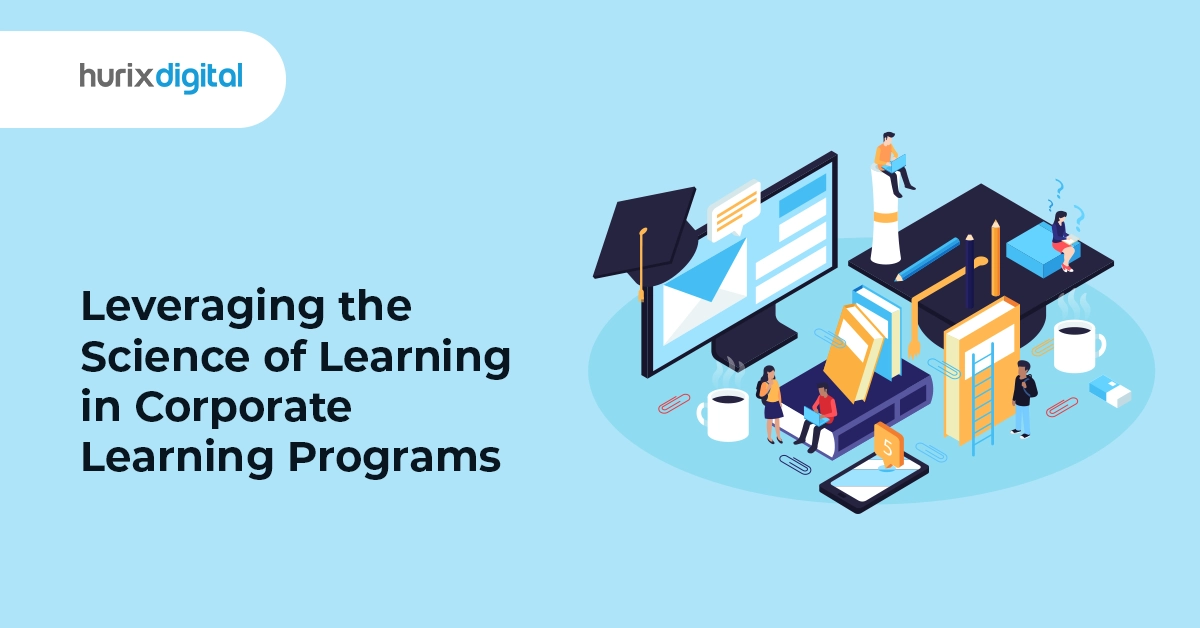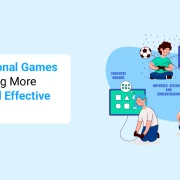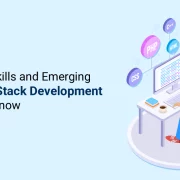
Leveraging the Science of Learning in Corporate Learning Programs
Looking to enhance your corporate learning initiatives for optimal effectiveness, engagement, and impact? Aspire to elevate your employees’ performance, retention, and overall satisfaction? Keen on maintaining a competitive edge and navigating the ever-evolving business landscape?
If your response is affirmative to any of these queries, then it’s time to integrate the science of learning into your corporate training programs.
The science of learning delves into the intricacies of how individuals acquire, retain, and apply new information and skills. It is based on research from various disciplines, such as psychology, neuroscience, education, and cognitive science. It provides evidence-based principles and strategies that can help you design and deliver corporate learning programs that are aligned with how the human brain works.
In this blog, we will explore some of the key aspects of the science of eLearning, along with several ways you can use them in your corporate learning programs. Let’s start!
Table of Contents:
- Understanding the Importance of Science of Learning
- How to Use the Science of Learning in Corporate Learning Programs?
- Conclusion
Understanding the Importance of the Science of Learning
The science of eLearning is important because it can help you create corporate learning programs that are:
1. Effective
By applying the science of learning, you can design corporate learning programs that effectively enhance employee performance and meet your learning goals.
You can also steer clear of learning obstacles and misconceptions, such as the belief in learning styles, the decay of memory over time, and the false sense of mastery.
2. Engaging
The science of learning can help you create corporate learning programs that capture and sustain the attention and interest of your learners. It can help you use techniques such as storytelling, gamification, and personalization to make your corporate learning programs more relevant, immersive, and enjoyable.
3. Impactful
Using the science of learning, you can create corporate learning programs that have a lasting impact on your learners and your organization. It can help you measure and evaluate the effectiveness of your corporate learning programs and ensure that they transfer to the workplace and support your business goals.
Also Read: Inclusive Learning to Address the Diverse Needs in Workforce Development
How to Use the Science of Learning in Corporate Learning Programs?
Below are the most effective ways to leverage the science of learning in your corporate training initiatives:
1. Make it Meaningful
One of the key aspects of the science of learning is that learning is more effective when it is meaningful and relevant to the learner. This means that you need to connect your corporate learning programs to the prior knowledge, goals, and interests of your learners.
Show them how your corporate learning programs can help them solve real-world problems and challenges that they face in their work.
Some of the ways to make your corporate learning programs more meaningful are:
- Use scenarios and case studies that reflect the realistic situations and contexts that your learners encounter in their work.
- Use examples and analogies that relate to the existing knowledge and experience of your learners.
- Use stories and narratives that engage the emotions and imagination of your learners.
- Use questions and prompts that elicit the curiosity and motivation of your learners.
- Use personalization and customization that allow your learners to choose their learning paths and preferences.
2. Make it Active
Make learning more effective by engaging your employees in the learning process and encouraging them to actively process, apply, and reflect on new information and skills. Provide them opportunities to practice and test their learning and receive feedback and guidance.
Here’s how to make your corporate learning programs more active:
- Use interactive elements such as quizzes, simulations, games, and puzzles that challenge and reinforce the learning of your learners.
- Use collaborative elements such as discussions, debates, peer reviews, and group projects that foster the social and cooperative learning of your learners.
- Use experiential elements such as role-plays, demonstrations, and field trips that provide hands-on and immersive learning for your learners.
- Use reflective elements such as journals, portfolios, and self-assessments that promote the metacognitive and self-regulated learning of your learners.
3. Make it Spaced
This means avoiding cramming and overloading your learners with too much information and skills at once. Provide them with repeated and varied exposure and review of the new information and skills over time.
Make your corporate learning programs more spaced using the following strategies:
- Use microlearning elements such as bite-sized modules, videos, podcasts, and infographics that deliver the essential information and skills in short and manageable chunks.
- Use spaced repetition elements such as flashcards, quizzes, and reminders that help your learners review and recall the new information and skills at optimal intervals.
- Use interleaving elements such as mixed practice, switching topics, and alternating formats that help your learners integrate and differentiate the new information and skills from different domains and sources.
4. Make it Varied
Make your learning program more interactive by exposing your learners to different types of information and skills and different modes and methods of learning. Adapt your digital learning solutions to the different needs and preferences of your learners.
Some of the ways to make your corporate learning programs more varied are:
- Use multimodal elements such as text, audio, video, images, and animations that appeal to the different senses and learning styles of your learners.
- Use multiformat elements such as e-books, webinars, podcasts, and blogs that offer different formats and media of learning for your learners.
- Use adaptive elements such as branching scenarios, adaptive quizzes, and adaptive feedback that provide different levels and paths of learning for your learners.
5. Make it Feedback-Rich
Make the science of learning feedback-rich and supportive. To do this, provide your learners with timely, specific, and constructive feedback and guidance on their learning progress and performance. Encourage them to seek and use feedback and support from various sources and resources.
Here’s how you can make your corporate learning programs more feedback-rich:
- Use formative elements such as quizzes, surveys, and polls that provide your learners with immediate and actionable feedback and suggestions on their learning.
- Use summative elements such as tests, assignments, and projects that provide your learners with comprehensive and evaluative feedback and grades on their learning.
- Use social elements such as mentors, coaches, peers, and experts that provide your learners with human and personalized feedback and support on their learning.
Also Read: Exploring the Mobile Learning Gap: Why it Should Be the Norm in Workforce Learning and Development
Conclusion
The science of learning is a powerful and practical tool that can help you create corporate learning programs that are effective, engaging, and impactful. By applying the science of learning principles and strategies to your corporate learning programs, you can enhance the learning experience and outcomes of your employees and your organization.
Partner with Hurix Digital if you want to leverage the science of learning in your corporate learning programs. We can help you create custom learning solutions that cover various topics and domains, use various formats and media, and leverage various features and functionalities.
Contact us today and explore the full potential of your corporate learning initiatives!

Performance, Results, Growth, and Life-Long Learning define my professional life. I am passionate about making workplace learning planful, purposeful, and impactful. I take pride in partnering with clients and bringing them the best in learning design and creating solutions that address business challenges.



